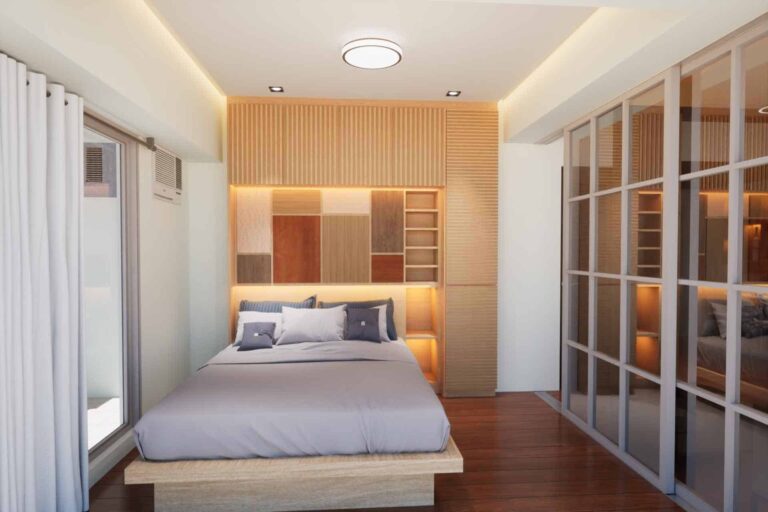Wood vs Metal Bed Frames: Comparison of Durability and Longevity
When it comes to choosing the right bed frame, the key considerations usually revolve around durability, aesthetics, and cost. The decision often narrows down to two popular materials: wood and metal. This article aims to provide an exhaustive comparison of wood vs metal bed frames, focusing on their durability, longevity, aesthetics, maintenance, and cost-effectiveness. By the end of this discussion, you will be equipped with the necessary knowledge to make an informed decision that best fits your needs and preferences.
Overview of Wood Bed Frames
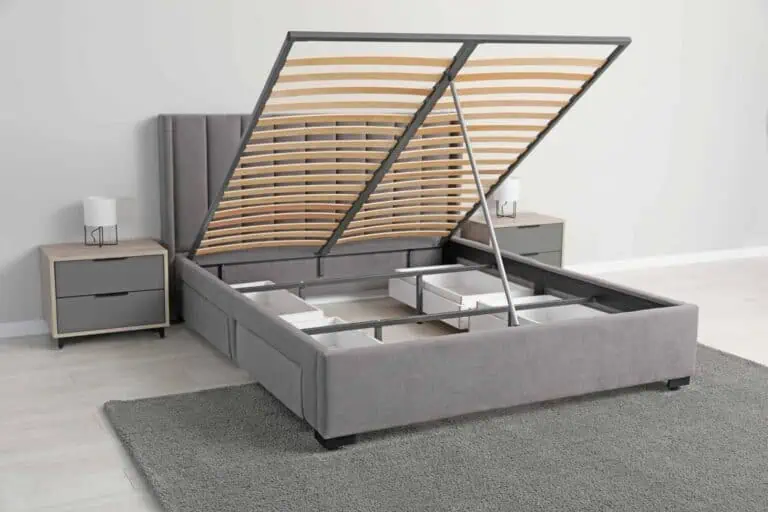
Wood bed frames are a timeless choice, renowned for their versatility and natural charm. These frames are typically crafted from a variety of wood types such as oak, maple, cherry, or pine, each offering unique textures, colors, and grain patterns. Solid wood frames are highly valued for their robustness and durability, often seen as heirlooms that can be passed down through generations. Some wood frames also utilize engineered wood components which bring affordability without greatly compromising the structural integrity. The adaptability of wood as a material allows for a vast range of designs, from sleek modern aesthetics to more intricate, ornate traditional styles.
Durability and Longevity of Wood Bed Frames
One of the most appealing aspects of wood bed frames is their impressive durability and longevity. Particularly when crafted from solid wood, these bed frames are capable of withstanding significant weight and wear over the years. Types of wood such as oak or teak are especially renowned for their robustness, often lasting for decades with the proper care. Additionally, wood bed frames are less prone to squeaking or wobbling, a common issue with some other materials. Despite their durability, it’s important to remember that wood bed frames can be susceptible to termite infestation and humidity damage if not properly cared for. However, regular maintenance and care can easily prevent these issues, adding to the lifespan of the bed frame. This inherent strength and endurance make wood bed frames a valuable investment for many households.
Pros and Cons of Wood Bed Frames
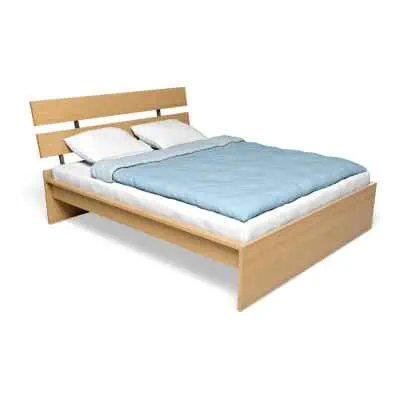
Like any product, wood bed frames come with their pros and cons, and understanding these can help in making an informed purchasing decision.
Pros
- Durability: As mentioned earlier, wood bed frames, especially those made from solid wood, are known for their durability and longevity. They can last for decades with the right care.
- Aesthetic appeal: The natural look and feel of wood bed frames add a touch of elegance and warmth to any bedroom. The variety of wood types also provides a wide range of colors and textures to choose from.
- Stability: Wood bed frames offer great stability and are less likely to wobble or squeak compared to other materials.
Cons
- Susceptibility to pests: Wood bed frames can be susceptible to termite infestation. Regular maintenance and proper care can prevent this.
- Potential for humidity damage: In high humidity areas, wood bed frames can absorb moisture leading to warping or swelling. However, using a dehumidifier or keeping the room well-ventilated can mitigate this.
- Weight: Wood bed frames can be quite heavy, making them difficult to move or rearrange in your room.
Overview of Metal Bed Frames
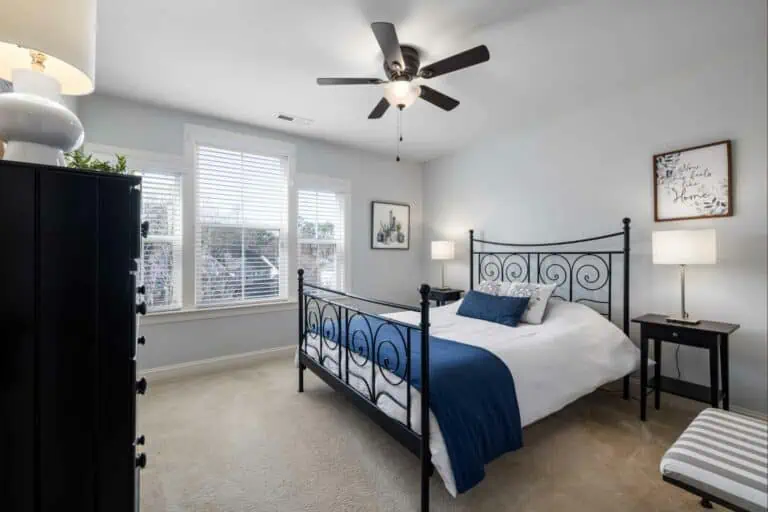
Metal bed frames have been a popular choice for many households, primarily because of their blend of durability, design versatility, and affordability. These bed frames are made from various types of metal, including iron, steel, and aluminum, each offering different attributes.
For instance, iron bed frames are highly durable and can bear significant weight, making them ideal for heavier mattresses or individuals. Steel frames, on the other hand, offer a sleek modern aesthetic and are often easier to assemble and transport. Aluminum frames are lightweight and resistant to rust, making them a great choice for humid climates.
In addition to their practical benefits, metal bed frames also offer significant aesthetic flexibility. They can be crafted into a wide range of designs, from sleek minimalist styles to intricate vintage designs, allowing them to complement any bedroom décor. Despite the many advantages, metal bed frames are not without their drawbacks, which include potential for noise, limited under-bed storage, and the need for occasional maintenance.
Durability and Longevity of Metal Bed Frames
Metal bed frames are renowned for their durability and longevity. Unlike wood, metal is not prone to scratches, dents, or wear caused by daily use. Even after years of usage, metal bed frames often retain their sturdiness and robustness. One of the reasons they are so durable is their resistance to common household pests, including termites, that can significantly damage wooden frames over time.
Longevity is another notable advantage of metal bed frames. Metals like iron and steel are incredibly resilient and can last for many decades if cared for properly. Even frames made from lighter metals like aluminum boast impressive longevity due to their rust-resistant properties. However, to extend their lifespan even further, it’s recommended to periodically check for and promptly address any signs of damage or corrosion. While metal bed frames may require a higher initial investment, their durability and longevity often make them a more cost-effective choice in the long run.
Pros and Cons of Metal Bed Frames
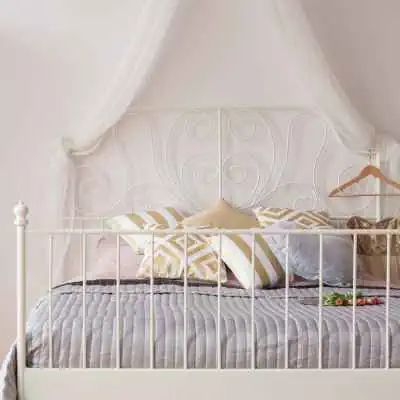
Pros
- Durability: Metal bed frames, made from materials like iron, steel, or aluminum, are highly durable and resistant to wear from daily use.
- Longevity: Metal frames can outlast their wooden counterparts by many years, providing excellent value over time.
- Design Flexibility: Metal bed frames come in a variety of designs, from minimalist to intricate, vintage styles.
- Pest Resistance: Unlike wood, metal is resistant to damage from common pests such as termites.
Cons
- Noise Potentials: Some metal bed frames may squeak or creak, especially as they age or if not properly maintained.
- Limited Under-Bed Storage: Metal bed frames may not offer as much under-bed storage space as some other types of bed frames.
- Maintenance Needs: While generally low-maintenance, metal bed frames may require regular checks for signs of damage or corrosion to ensure their longevity.
Comparing Wood vs Metal Bed Frames
When choosing between wood and metal bed frames, there are a few key factors to consider.
- Durability and Longevity: Both wood and metal frames can be highly durable, but metal typically outlasts wood, especially when well-maintained.
- Design : Wood frames tend to offer a warmer, more traditional aesthetic and can be crafted into a wide variety of styles. In contrast, metal frames offer design flexibility from minimalist to more intricate, vintage styles.
- Maintenance: Wood frames often require regular treatment to maintain their appearance and prevent damage from pests. Metal frames, although generally low-maintenance, need regular checks for signs of damage or corrosion.
- Price: Metal frames can sometimes be more expensive initially but can prove more cost-effective over time due to their durability. Wood frames, on the other hand, may have a lower upfront cost but might need replacing earlier.
- Noise: Metal frames can sometimes develop a squeak, whereas wood frames are usually quieter.
- Storage: Wood frames often feature built-in storage or enough height for under-bed storage. Metal beds may not offer as much storage space.
Ultimately, the choice between wood and metal bed frames will depend on personal preference, budget, and the specific requirements of your space.
Aesthetics and Design Variety

In terms of aesthetics and design variety, both wood and metal bed frames have their unique offerings. Wood bed frames bring a sense of warmth and tradition into a room. They can be carved and styled into a myriad of designs, from rustic farmhouse to sleek mid-century modern. They can also be painted or stained in various colors to match your decor.
On the other hand, metal bed frames give a room an air of modern sophistication or vintage charm, depending on the design. They’re often seen in minimalist, industrial, or Victorian designs, adding an element of artistic flair to the room. Metal frames can be crafted with complex, intricate patterns or kept simple with clean lines and polished finishes. They can also be coated in a range of colors, offering you versatility in your design choices.
Ease of Maintenance
When it comes to maintenance, metal bed frames generally have the upper hand. They’re typically more resistant to common issues such as pests and rot, which can affect wooden frames. A simple wipe-down with a damp cloth is usually sufficient to keep a metal frame looking its best. Touch-up paint can handle any chips or scratches that might occur over time.
Wood bed frames, on the other hand, may require a bit more TLC. They need to be dusted regularly to prevent build-up, which could lead to scratches. Over time, they might need refinishing or repainting, especially if they are in a high-moisture environment. Additionally, wooden bed frames may be prone to termite infestations, which would necessitate pest control measures. However, proper care and regular cleaning can prolong the life of a wooden bed frame and keep it looking good as new.
Cost-effectiveness
The cost of both metal and wooden bed frames can vary depending on the quality, design, and craftsmanship involved. Generally speaking, metal bed frames are often more affordable than their wooden counterparts. They are made with less expensive materials and the manufacturing process is typically more straightforward, which helps to keep costs down.
On the other hand, wooden bed frames can be more extensive due to the cost of the natural resource, as well as the craftsmanship required to carve and assemble the frame. High-quality, solid wood frames are often at a higher price point due to their durability and the intricate designs they often feature.
However, it’s important to consider the long-term costs as well. While a metal frame may be cheaper upfront, a solid wood frame could last longer and therefore prove to be more cost-effective over time. Furthermore, maintenance and potential repair costs should be factored into the overall calculation to make an informed purchasing decision.
Conclusion
Both metal and wooden bed frames have their own unique sets of advantages and drawbacks. Metal frames typically offer durability, low maintenance, and affordability, while wooden frames stand out with their aesthetic appeal, warmth, and potential longevity. However, these characteristics can vary significantly based on the quality of the materials used and the craftsmanship involved. Ultimately, the choice between a metal and a wooden bed frame depends on personal preferences, budget, and the specific needs and conditions of your home. Always consider these factors along with the long-term costs to make a well-informed decision that you will be happy with for years to come.




